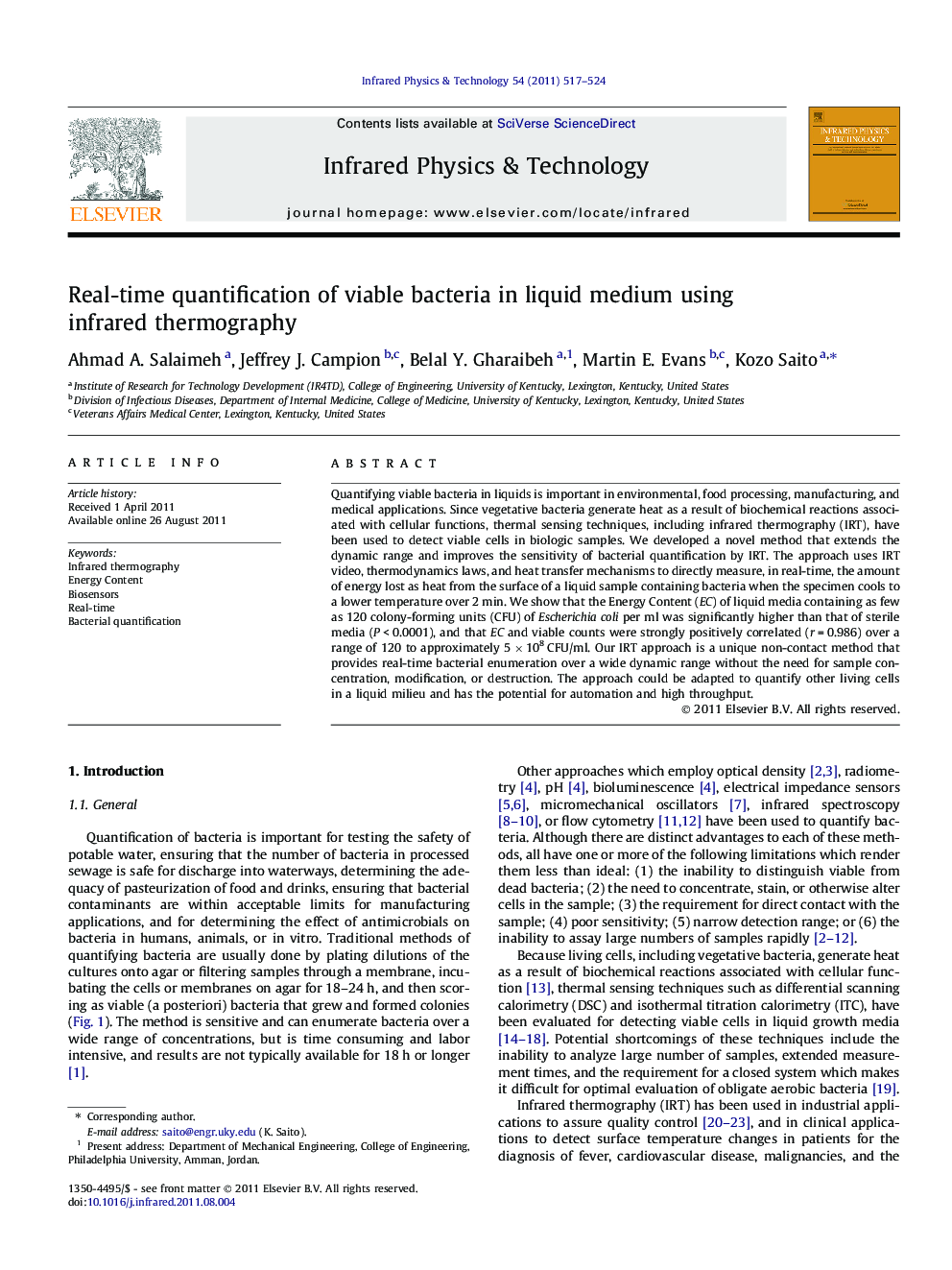| Article ID | Journal | Published Year | Pages | File Type |
|---|---|---|---|---|
| 1784616 | Infrared Physics & Technology | 2011 | 8 Pages |
Quantifying viable bacteria in liquids is important in environmental, food processing, manufacturing, and medical applications. Since vegetative bacteria generate heat as a result of biochemical reactions associated with cellular functions, thermal sensing techniques, including infrared thermography (IRT), have been used to detect viable cells in biologic samples. We developed a novel method that extends the dynamic range and improves the sensitivity of bacterial quantification by IRT. The approach uses IRT video, thermodynamics laws, and heat transfer mechanisms to directly measure, in real-time, the amount of energy lost as heat from the surface of a liquid sample containing bacteria when the specimen cools to a lower temperature over 2 min. We show that the Energy Content (EC) of liquid media containing as few as 120 colony-forming units (CFU) of Escherichia coli per ml was significantly higher than that of sterile media (P < 0.0001), and that EC and viable counts were strongly positively correlated (r = 0.986) over a range of 120 to approximately 5 × 108 CFU/ml. Our IRT approach is a unique non-contact method that provides real-time bacterial enumeration over a wide dynamic range without the need for sample concentration, modification, or destruction. The approach could be adapted to quantify other living cells in a liquid milieu and has the potential for automation and high throughput.
► Novel IRT approach to quantify bacteria has been developed and tested for Escherichia coli. ► The approach measures energy lost from liquid containing bacteria over 2 min. ► The approach could be adapted to quantify other living cells in a liquid milieu.
